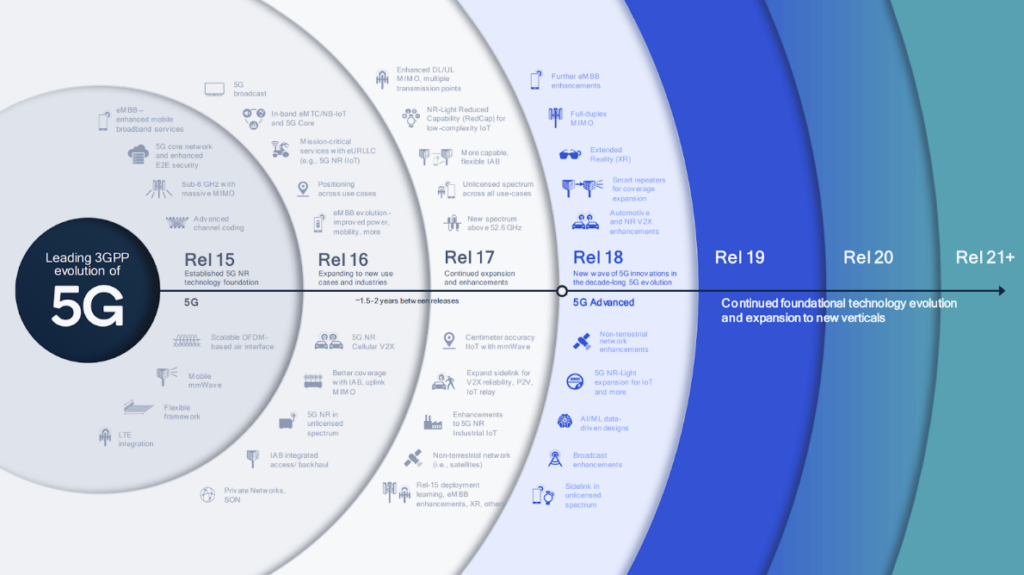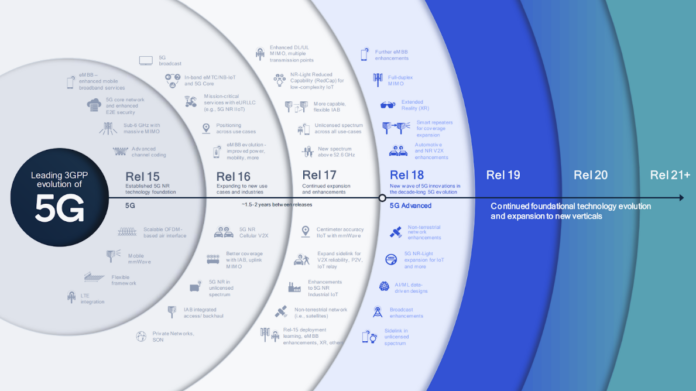While cellular has undergone and brought about rapid and continuous change in human communication over the 40 years since the industry’s inception, we can identify a certain few developments that were profound and revolutionary. These include digitization of voice in 2G, text messaging, smartphones and high-speed packet data in 3G and 4G. It typically took a decade or more for winning innovations to displace rival technologies and transform consumer behavior with widespread or near universal consumer adoption. 5G will also revolutionize in various ways and more broadly.

Digitization with 2G from around 1992 provided the increased network capacity for everyone everywhere to use cellular as their primary or only means of telephony by the mid-2000s. Half the world’s population had their own mobile phone by 2013. While the first text message was also sent in 1992, it was a decade before SMS became a mainstream activity in all major markets including the US. The US and a few other nations relatively slow to adopt text messaging due to rivalry between SMS and other messaging platforms including those based on WAP browsers.
Smartphones have surpassed all other MIDs
Following lackluster adoption of Nokia’s Communicator devices from the latter 1990s, the first smartphone models were introduced around at the beginning of the millennium. However, it was improved functionality including large multi-touch displays in iPhones and Android handsets since 2007 and 2008 respectively, from app stores since 2008 and with data speeds and capacities increasing more than ten-fold over 2G in 3G EV-DO and HSPA that caused purchases of smartphones to outstrip those of feature phones globally from 2011. With the addition of 4G LTE, by the middle of that decade smartphones exceeded 90% of purchases and became the primary or only means of Internet access for the majority worldwide. In combination with fast data connections over LTE and with positioning technologies including GPS, revolutionary new applications that were unfeasible in the mid-2000s, such as Uber, have flourished since 2010.
So far, with 5G services since 2019, as expected, this latest new standard has helped further expand capacity and occasionally wow us with some increased headline speeds in eMBB; but 5G has yet to deliver its own defining singularity— “a hypothesized future era or event when exponential improvements in computer intelligence and advances in technology will result in an acute change in human society and evolution.”
I find this rather reminiscent of the 3G era until mid-2000s, before smartphones really took off at the end of that decade. There was lots of hype, substantial investment and great optimism for the mobile Internet. I was impressed back then with the consensus of faith in the industry: while nobody knew which platforms or applications, let alone which actors would prevail. Some important developments and improvements took longer than expected. 2G and early 3G data— with GPRS and WCDMA respectively—were not really fast or pervasive enough. Operating systems and applications processing were insufficient and power consumption was too high to meet end-user expectations set through use of PCs on fixed Internet connections. Mobile broadband was at first largely used on PCs with data cards and dongles. It was unclear exactly what preeminent mobile Internet devices would look like until Apple iOS and Android smartphones took hold in the latter part of the decade and until Apple also redefined the tablet with launch of the iPad in 2010. Apps developer ecosystems such as for BREW on feature phones and then with Symbian on early smartphones were rudimentary precursors to what subsequently fueled iOS and Android from 2008 through their associated app stores.
Timing is everything, and patience is a virtue. As an industry analyst, my previous firm was overly optimistic—by around a decade—about the uptake of “location-based services,” for which Uber is now the poster child. Prior to my time, the research firm had also incorrectly predicted that public email would prevail over the fax machine—in the 1990s. However, for example, the zeitgeist movie You’ve Got Mail depicting email as a novelty was not released until 1998.
Promise and in practice for 5G
20 years after 3G’s beginnings, 5G similarly also has enormous promise: the possibilities are diverse, numerous and increasing. But where will the rubber hit the road? So far, benefits in 5G are mostly in accommodating ever-increasing data volume demands, while also providing some blisteringly higher data speeds as a byproduct. 5G already delivers greatly increased capacity with its ability to access higher-frequency spectrum bands above 2.5GHz including mmWave and with improved frequency reuse using MIMO technologies. However, satisfying ever-increasing raw data consumption at proportionately lower prices per bit has not been a money spinner for operators. The industry also seeks new sources of value.5G, 5G Advanced and 6G might also eventually deliver uniquely identifiable transformations with entirely new kinds of usage; but these technologies are most likely to become the fundamental underpinnings of technological progress with substitution and enhancements in a plethora of existing applications. As I and others explained five years ago, this is how other “General Purpose Technologies (GPTs)— that is, a technology that finds economy-wide use, drives complementary innovations in other sectors and becomes a driver of economy-wide innovation and productivity”—have been employed. For example, the ubiquitous electricity grid— providing electrical power reliably virtually anywhere—is taken for granted as an enabling capability for everything including lighting, heating, refrigeration, rail transport and in all kinds of manufacturing. Electricity has proved to be a superior substitute in many cases including versus gas lighting and steam-engine powered manufacturing. Similarly, cellular data connectivity is increasingly substituting as well as complementing other technologies including wireline access and WiFi. Capabilities such as the highly secure, reliable and low latency delivered by 5G NR RAN and with its SA core give these new standards a competitive edge by delivering added value.
Killer apps on new platforms
While it is possible, for example, that the current niche of headset-based XR might become a mainstream high-volume market like that for console gaming, that still remains only a possibility. Google Glass around 2014 was a bust, but another insightful attempt with today’s technologies might well succeed. By way of comparison, the ill-defined niche of computer tablet devices that had languished for years in the 2000s was transformed and redefined by Apple with the introduction of its highly successful iPad in 2010. This included an ARM-based rather than an X.86-based processor and largely the same iOS as used in iPhones. Many other OEMs followed its lead with Android tablets.
The automotive industry is also being transformed by various cellular technologies, as it is by substitution between other GPTs. Electrical traction is replacing the internal combustion engine in vehicle power trains following the latter’s dominance for more than a century. On the railways, steam engines were largely replaced by diesel locomotives rather more than 60 years ago. And the latter have been substantially replaced by electric trains since then, while many passengers have been oblivious or have hardly noticed the change.
Fully autonomous vehicles would obviously be extremely valuable as they eliminate the need for a human driver, as well as also hopefully being rather less accident prone. However, self-driving across the wide the range of conditions one might encounter—such as in snow—is difficult to achieve because self-driving must be extremely safe and reliable. Capabilities are being forged from a combination of sensing, AI and communication technologies. C-V2X might prove to be crucial in achieving the high performance required, but the technical necessity for it has not yet been established and its business case has not yet been demonstrated. C-V2X infrastructure would also need to be sufficiently widely deployed in advance.
5G, including 5G and with 6G to follow from around 2030 will surely enable further major improvements as everything becomes increasingly connected with intelligence in the cloud, at the network edge and on the other side of the 5G air interface in devices. Exactly what, how and when is difficult to predict but impact, utility and value will surely be profound. Have faith.

